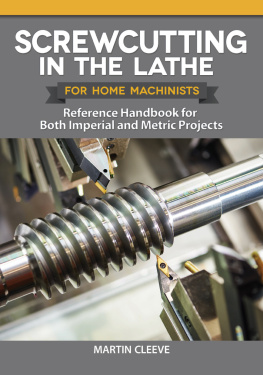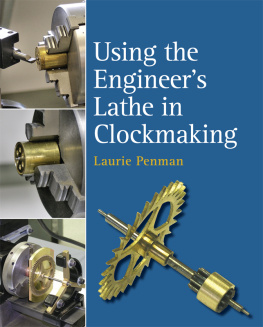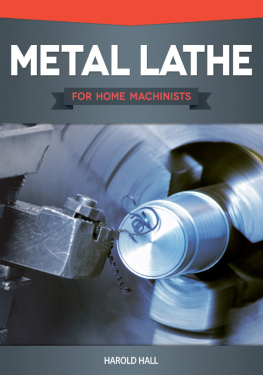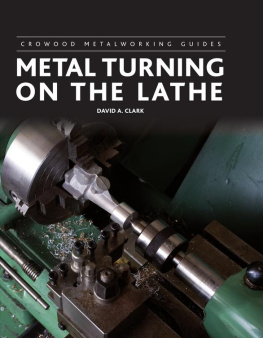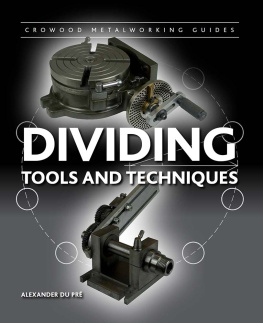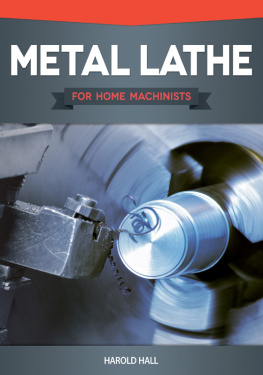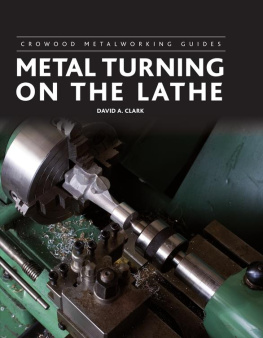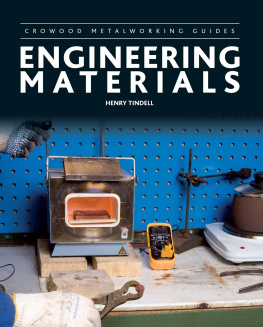Martin Cleeve - Screwcutting in the Lathe for Home Machinists: Reference Handbook for Both Imperial and Metric Projects
Here you can read online Martin Cleeve - Screwcutting in the Lathe for Home Machinists: Reference Handbook for Both Imperial and Metric Projects full text of the book (entire story) in english for free. Download pdf and epub, get meaning, cover and reviews about this ebook. year: 2021, publisher: Fox Chapel Publishing, genre: Children. Description of the work, (preface) as well as reviews are available. Best literature library LitArk.com created for fans of good reading and offers a wide selection of genres:
Romance novel
Science fiction
Adventure
Detective
Science
History
Home and family
Prose
Art
Politics
Computer
Non-fiction
Religion
Business
Children
Humor
Choose a favorite category and find really read worthwhile books. Enjoy immersion in the world of imagination, feel the emotions of the characters or learn something new for yourself, make an fascinating discovery.
- Book:Screwcutting in the Lathe for Home Machinists: Reference Handbook for Both Imperial and Metric Projects
- Author:
- Publisher:Fox Chapel Publishing
- Genre:
- Year:2021
- Rating:3 / 5
- Favourites:Add to favourites
- Your mark:
Screwcutting in the Lathe for Home Machinists: Reference Handbook for Both Imperial and Metric Projects: summary, description and annotation
We offer to read an annotation, description, summary or preface (depends on what the author of the book "Screwcutting in the Lathe for Home Machinists: Reference Handbook for Both Imperial and Metric Projects" wrote himself). If you haven't found the necessary information about the book — write in the comments, we will try to find it.
Your complete guide to the uses of a lathe for all forms of screwcutting!
- Comprehensive manual explaining all the uses of a lathe for every form of screwcutting in various thread forms, pitches, and diameters
- Includes calculations, gear trains, conversions, and other helpful reference tables
- Both imperial and metric standards are provided
- Author Martin Cleeve was a well-respected contributor to Model Engineer magazine for more than 30 years
Screwcutting in the Lathe for Home Machinists is a complete reference handbook detailing the uses of a lathe for all forms of screwcutting in all thread forms, pitches, and diameters.
Working in both imperial and metric standards, this comprehensive and invaluable resource will inform you on everything you need to know about screw-cutting with a lathe, from fundamental principles to gearing systems, single point lathe threading tools, and so much more. Also included are calculations, gear trains, conversions, and other helpful reference tables.
The wide variety of subjects covered include:
- Principles of Lathe Screwcutting
Altering the pitch
Simple and compound gear trains
Self-act feeds from leadscrews
Diametral pitch worms
The DP formula - Gearing an English Leadscrew for Metric Threads
50-127 translation ratio explained
Reduced pitch translators
The 2-21 (63-160) method
Worms sized by module - Lathes with Metric Leadscrews
Screwcutting calculations
Disadvantages of 127-50 step up
English gear trains
Quick checking for nominal pitch - Problems and Analysis of Repeat Pick-Up
Action of English indicator
Geared leadscrew indicators
Pick-up when gearing is approximate
Pick-up with dog-clutch control - Multiple-Start Threads
Automatic start indexing
Feasibility test
Automatic start indexing possibilities
Special leadscrew design formula - Single Point Lathe Threading Tools
High speed steel
Tungsten carbide
Cutting angles
Inserted bit tools
Thread tool sharpening and grinding - Practical Aspects of Lathe Screwcutting
Four ways of depthing a screw thread
Square thread cutting
Acme thread cutting
Special tap making
Thread crest radii
Screwcutting speeds - Practical Thread Sizing Measurement
Definitions of screw thread terms
The 3-wire method of thread checking
One-wire checking
Pitch diameter calculations
Helix angle of screw threads
Gauging nut threads - And much more!
Author Martin Cleeve was a well-respected contributor to Model Engineer magazine for more than 30 years. A known perfectionist to high-quality and accurate work, he designed and described many original lathe accessories, which have been made and regularly used in hundreds of amateur and professional workshops.
Get answers to all your questions about lathe screwcutting, with the must-have handbook for every lathe operator, Screwcutting in the Lathe for Home Machinists!
The Home Machinist Series is filled with everything you ever wanted to know about machining and more. I feel quite confident that those who read the whole series, or even just one book, will come away with invaluable and extensive knowledge that will help further their craft.
Shawn Arnold, Publisher CNC WEST magazine
There is a wealth of insightful and easy-to-comprehend information for metalworkers in the Home Machinist Series. The books are guaranteed to serve as handy, long-term machining references.
Alan Richter, Editor at Large, Cutting Tool Engineering magazine
Martin Cleeve: author's other books
Who wrote Screwcutting in the Lathe for Home Machinists: Reference Handbook for Both Imperial and Metric Projects? Find out the surname, the name of the author of the book and a list of all author's works by series.

